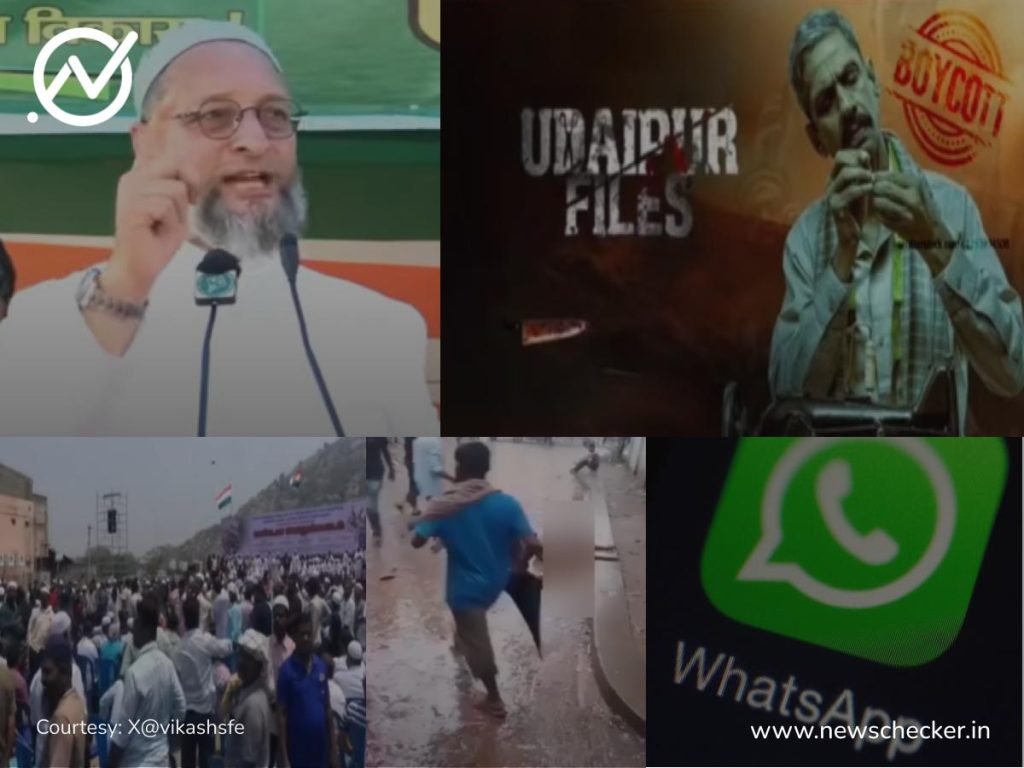The Perils of Misinformation: Debunking Five Viral Claims
In the digital age, where information spreads at lightning speed, the line between truth and falsehood often blurs. Social media platforms, while empowering communication, can also become breeding grounds for misinformation. This week, several viral claims, ranging from communalized reporting of a murder to resurrected old videos presented in a false context, highlight the urgent need for critical thinking and fact-checking in the face of online narratives.
Tragedy Twisted: Dhaka Murder Misrepresented
The brutal lynching of a scrap trader in Dhaka, Bangladesh, ignited outrage and protests demanding justice. However, several Indian news outlets misreported the incident, falsely identifying the victim as a Hindu named Lal Chand Sohag. This misidentification, fueled by communal biases, not only distorted the narrative but also risked exacerbating tensions between religious communities. Newschecker’s investigation revealed the victim’s true identity, exposing the irresponsible reporting that sought to exploit a tragedy for sensationalized narratives. This incident emphasizes the critical need for accurate and unbiased reporting, especially in sensitive inter-community matters.
WhatsApp Privacy Scare: Misleading Claims Debunked
A viral message claiming that Meta AI was accessing personal chats on WhatsApp caused widespread panic among users. The message urged WhatsApp group admins to enable “Advanced Chat Privacy” to prevent this alleged intrusion. This claim, however, proved to be misleading. Newschecker’s fact-check revealed that there was no evidence to support the claim of Meta AI accessing private chats. The viral message was a classic example of fear-mongering, preying on users’ anxieties about digital privacy. It underscores the importance of verifying information from reliable sources before succumbing to online hysteria.
False Context, Recycled Videos: Exploiting the “Udaipur Files” Controversy
The controversy surrounding the film “Udaipur Files,” based on the murder of tailor Kanhaiya Lal in Udaipur, became fertile ground for the spread of misinformation. Two unrelated videos were falsely linked to the film, exploiting the existing sensitivities. The first video, purportedly showing an Indian woman being apprehended for shoplifting in the US, was actually from Mexico and had no connection to the alleged incident. The second video, depicted as a protest against the film, was actually footage from an old anti-Waqf Act rally in Tamil Nadu. These instances demonstrate how old videos can be resurrected and recontextualized to fit current narratives, often with malicious intent. The spread of such misinformation can further polarize communities and exacerbate existing tensions.
Political Spin: Asaduddin Owaisi Video Misrepresented
A video of AIMIM President Asaduddin Owaisi criticizing filmmakers was falsely linked to the “Udaipur Files” controversy. The video, which was old and unrelated to the film, was presented as Owaisi’s reaction to the movie. This manipulation of existing content to create a false narrative is a common tactic used to mislead audiences and create controversy where none exists. It highlights the need to be wary of out-of-context videos, especially in politically charged environments.
Navigating the Information Labyrinth: The Need for Critical Evaluation
These five debunked claims underscore the pervasive nature of misinformation in the digital age. They highlight the ease with which false narratives can be created, disseminated, and amplified, often with damaging consequences. From communalizing tragedies to exploiting anxieties about privacy and manipulating political narratives, the spread of misinformation poses a significant threat to informed public discourse. In an increasingly complex information landscape, media literacy and critical evaluation of online content are more vital than ever. It is crucial to develop a discerning eye, verify information from credible sources, and resist the urge to share unverified claims. By doing so, we can contribute to a more informed and less polarized online environment, where truth prevails over falsehood.


